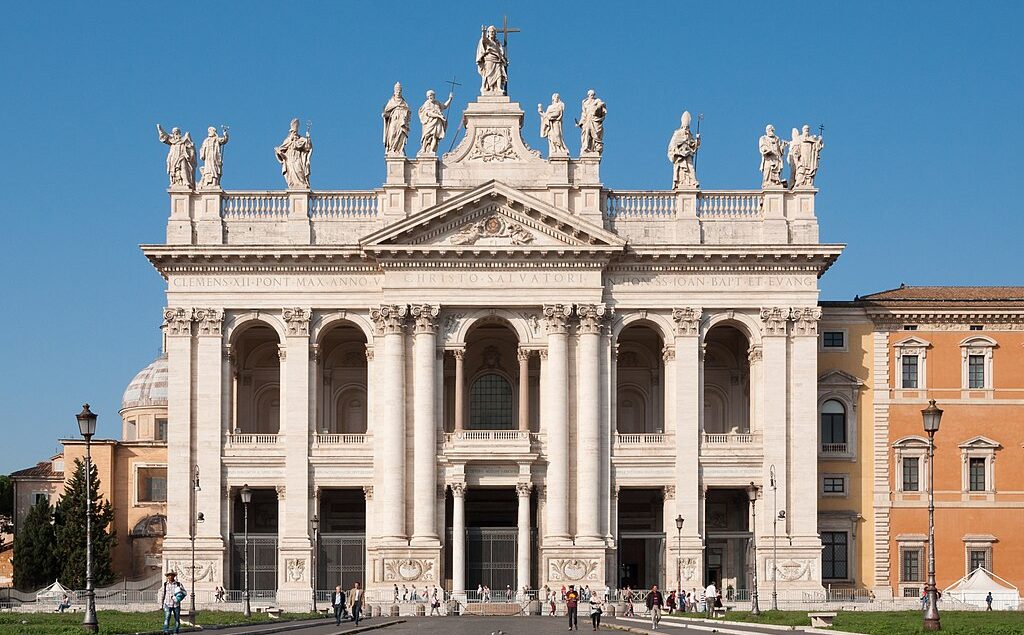The Edict of Milan marked a significant turning point for Christians throughout the Roman Empire. For nearly three hundred years, Christians had faced varying degrees of persecution, ranging from minimal tolerance to outright hostility. However, in February 313, a political agreement was reached between the Roman emperors Constantine and Licinius in Mediolanum. This proclamation established religious toleration for Christianity within the empire, granting individuals the freedom to worship any deity of their choice. It assured Christians of their legal rights, including the right to organise churches, and mandated the return of confiscated property to them. Eleven years later, in the year 324 AD, a church in Rome was consecrated and dedicated to Christ the Saviour. This church, along with the adjoining Lateran Palace, became the centre of Christian life in the city, serving as the residence of the popes and as the cathedral of Rome. Known as the Lateran Basilica, this church earned the title “Mother and Head of All the Churches in the City and the World.” It retains its significance and title to this day, despite being overshadowed by St Peter’s Basilica in the Vatican. This importance is reflected in the dedicated feast that is celebrated universally by the Church across the world. Although we may not be familiar with the Lateran Basilica, the feast of its dedication provides an opportunity to explore a deeper meaning and understanding of the Church in various aspects of its existence. Today’s readings offer us some food for thought.
Jesus’ forceful intervention at the Temple in Jerusalem was met with outrage and hostility. Agitated by his actions, those around him demanded proof of authority to justify his shocking behaviour, asking, “What sign do you show us for doing these things?” We will look at his answer a bit later. The initial explanation provided in the Gospel was about the mistreatment of the Temple: “Do not make my Father’s house a house of trade.” The commotion created by sacrificial animals, along with the haggling of sellers and buyers, detracted from the prayerful and dignified atmosphere that the Temple deserved. Since its inception during the time of King Solomon, the Temple was supposed to be a place dedicated to the worship of the God of Israel. In a religious context, “dedicated” means set apart for a sacred purpose, signifying a formal commitment to serve or belong to a deity. Throughout the ancient history of Israel, this understanding often faded from people’s minds, leading to various forms of abuse of the Temple. Restoration efforts usually followed such abuses. One of the latter took place after the Maccabean Uprising, when the Temple, ravaged by hostile forces both within and without Jewish society, was re-dedicated, “Hanukkah” in Hebrew, a term many of us recognise as the name of a Jewish festival celebrated to this day.
The similar concept of “dedication” of church buildings has been consistently upheld in both Catholic and Eastern traditions from the beginning. Our churches are not merely venues for religious ceremonies; their sole and only purpose is the worship of God. They are meant to be sanctuaries where people can retreat from the distractions of the outside world to worship, pray, meditate, contemplate, and engage in intimate dialogue with God. Unfortunately, our churches are increasingly filled with chatter and noise, much like the Temple in Jerusalem. This environment deprives us and others of the sacred space needed to connect with and hear God. As a result, we often enter celebrations like Mass spiritually unprepared. We need to give ourselves and others time to “cool down” and quieten our minds. Otherwise, distractions, worries, and anxieties leave little room for deep engagement with the mysteries we celebrate. Admittedly, our Sunday Masses, which are held in a non-dedicated hall for practical reasons, do not easily foster an atmosphere conducive to prayer. However, we should not use this as an excuse, but rather as a challenge. When Jesus was challenged in response to his actions: “What sign do you show us for doing these things?” his answer shocked his audience even more than his actions: “Destroy this temple, and in three days I will raise it up.” The very idea of destroying the Temple must have evoked harrowing collective memories of such past occurrences. The biblical author immediately explained that Jesus “was speaking about the temple of his body.” St Paul explained that idea in today’s second reading: “Do you not know that you are God’s temple and that God’s Spirit dwells in you? If anyone destroys God’s temple, God will destroy him. For God’s temple is holy, and you are that temple.” Ultimately, a church building serves as a means of building the church, the community of the faithful. We come in from the noisy world to a church to become the Church in the world. When we allow ourselves and others to create a spiritual space dedicated to God, we can rekindle the light of the Gospel in our hearts and minds at Mass and then carry it out into the world, which longs for faith, hope, and love more than anything else.


